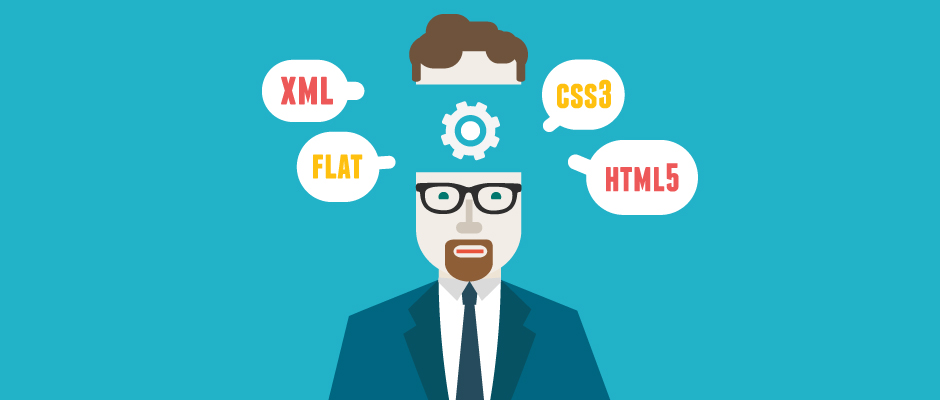Selecting Appropriate CSS Units for Scalable and Responsive Design
Jul 10, 2025 am 10:57 AMSelecting the right CSS unit in web design can improve layout flexibility and responsiveness. px is suitable for precise control, such as border or icon size; em is based on the current font size, used for proportional layout but is susceptible to nesting; rem is based on the root element, suitable for global unified design; vw/vh is based on the viewport size, suitable for full-screen layout; % is relative to the parent container, suitable for width or margin settings. In responsive design, rem is used to achieve overall scaling, and combining %, fr or clamp() functions can enhance adaptability and visual effects. Avoid mixing em and rem, use px to set fonts with caution, and recommend unifying rem to improve maintainability. By reasonably matching different units, a more flexible and consistent layout plan can be achieved.

In web design, choosing the right CSS unit is a key part of achieving scalable and responsive layouts. Many people like to use px when writing styles at the beginning, but in fact, using different units in different scenarios can bring better flexibility and adaptability.

Understand the applicable scenarios of different units
CSS provides a variety of units of length, such as px , em , rem , vw , vh and % , each with its own purpose.

- px (pixels) is the most basic unit, it is fixed and suitable for occasions where precise control is required, such as border width or icon size.
- em is a unit relative to the font size of the current element. It is often used to build a layout system with consistent proportions, but it will inherit the influence of the parent element and easily cause confusion during nesting.
- rem is a unit based on the font size of the root element (usually
) and is more suitable for global unified design and is not prone to errors. - vw / vh represents the percentage units of viewport width and height, respectively, 1vw = 1% of viewport width, suitable for layouts of full-screen display classes.
- % is often used in scenarios such as width and margins that are set relative to the parent container.
Only after understanding the characteristics of these units can you make reasonable choices based on specific needs.
Flexible use of relative units in responsive design
Responsive design emphasizes "adaptation", that is, the page can be displayed well on different devices. At this time, the absolute unit (such as px) is not enough, and the advantages of the relative unit are reflected.

- Use
remto set the font size, so that the text of the entire page can be adjusted with the root element, making it easier to scale the overall. - Defining the layout structure using
frunit in%orflex/gridcan achieve automatic scaling column width and row height. - Combining
vwcan automatically enlarge the title or picture on the large screen to enhance the visual impact, but be careful not to make it too small or too large. You can useclamp()to limit the range.
For example:
.title {
font-size: clamp(1.5rem, 5vw, 3rem);
}In this way, no matter how big the screen is, the font will not exceed the set minimum and maximum values.
Avoid common pitfalls and keep consistency
Although there are various units available, some common misunderstandings should be paid attention to:
- Don't mix
emandremtoo often, especially in deep nested structures, it is easy to be confused about the actual calculated values. - Try to avoid using
pxfor font size, especially on mobile, users may set higher default font sizes. - For spacing and container size,
remis preferred, so that the page is still friendly when the user changes the browser font size. - If you are working on a system that supports theme switching or dynamic scaling, then using
remis a more controllable way.
A small trick: You can set html { font-size: 62.5%; } in the root element, so that 1rem equals 10px, and the numbers are easier to convert.
Basically that's it. Choosing the right unit is not complicated, but it is easy to be ignored. Using it according to project type, design style and response needs can make the layout more flexible and maintainable.
The above is the detailed content of Selecting Appropriate CSS Units for Scalable and Responsive Design. For more information, please follow other related articles on the PHP Chinese website!

Hot AI Tools

Undress AI Tool
Undress images for free

Undresser.AI Undress
AI-powered app for creating realistic nude photos

AI Clothes Remover
Online AI tool for removing clothes from photos.

Clothoff.io
AI clothes remover

Video Face Swap
Swap faces in any video effortlessly with our completely free AI face swap tool!

Hot Article

Hot Tools

Notepad++7.3.1
Easy-to-use and free code editor

SublimeText3 Chinese version
Chinese version, very easy to use

Zend Studio 13.0.1
Powerful PHP integrated development environment

Dreamweaver CS6
Visual web development tools

SublimeText3 Mac version
God-level code editing software (SublimeText3)

Hot Topics
 How can CSS be used to implement dark mode theming on a website?
Jun 19, 2025 am 12:51 AM
How can CSS be used to implement dark mode theming on a website?
Jun 19, 2025 am 12:51 AM
ToimplementdarkmodeinCSSeffectively,useCSSvariablesforthemecolors,detectsystempreferenceswithprefers-color-scheme,addamanualtogglebutton,andhandleimagesandbackgroundsthoughtfully.1.DefineCSSvariablesforlightanddarkthemestomanagecolorsefficiently.2.Us
 Can you explain the difference between em, rem, px, and viewport units (vh, vw)?
Jun 19, 2025 am 12:51 AM
Can you explain the difference between em, rem, px, and viewport units (vh, vw)?
Jun 19, 2025 am 12:51 AM
The topic differencebetweenem, Rem, PX, andViewportunits (VH, VW) LiesintheirreFerencepoint: PXISFixedandbasedonpixelvalues, emissrelative EtothefontsizeFheelementoritsparent, Remisrelelatotherootfontsize, AndVH/VwarebaseDontheviewporttimensions.1.PXoffersprecis
 What are CSS Houdini APIs, and how do they allow developers to extend CSS itself?
Jun 19, 2025 am 12:52 AM
What are CSS Houdini APIs, and how do they allow developers to extend CSS itself?
Jun 19, 2025 am 12:52 AM
CSSHoudini is a set of APIs that allow developers to directly manipulate and extend the browser's style processing flow through JavaScript. 1. PaintWorklet controls element drawing; 2. LayoutWorklet custom layout logic; 3. AnimationWorklet implements high-performance animation; 4. Parser&TypedOM efficiently operates CSS properties; 5. Properties&ValuesAPI registers custom properties; 6. FontMetricsAPI obtains font information. It allows developers to expand CSS in unprecedented ways, achieve effects such as wave backgrounds, and have good performance and flexibility
 What are the key differences between inline, block, inline-block, and flex display values?
Jun 20, 2025 am 01:01 AM
What are the key differences between inline, block, inline-block, and flex display values?
Jun 20, 2025 am 01:01 AM
Choosing the correct display value in CSS is crucial because it controls the behavior of elements in the layout. 1.inline: Make elements flow like text, without occupying a single line, and cannot directly set width and height, suitable for elements in text, such as; 2.block: Make elements exclusively occupy one line and occupy all width, can set width and height and inner and outer margins, suitable for structured elements, such as; 3.inline-block: has both block characteristics and inline layout, can set size but still display in the same line, suitable for horizontal layouts that require consistent spacing; 4.flex: Modern layout mode, suitable for containers, easy to achieve alignment and distribution through justify-content, align-items and other attributes, yes
 What is the significance of Vue's reactivity transform (experimental, then removed) and its goals?
Jun 20, 2025 am 01:01 AM
What is the significance of Vue's reactivity transform (experimental, then removed) and its goals?
Jun 20, 2025 am 01:01 AM
ReactivitytransforminVue3aimedtosimplifyhandlingreactivedatabyautomaticallytrackingandmanagingreactivitywithoutrequiringmanualref()or.valueusage.Itsoughttoreduceboilerplateandimprovecodereadabilitybytreatingvariableslikeletandconstasautomaticallyreac
 How can CSS gradients (linear-gradient, radial-gradient) be used to create rich backgrounds?
Jun 21, 2025 am 01:05 AM
How can CSS gradients (linear-gradient, radial-gradient) be used to create rich backgrounds?
Jun 21, 2025 am 01:05 AM
CSSgradientsenhancebackgroundswithdepthandvisualappeal.1.Startwithlineargradientsforsmoothcolortransitionsalongaline,specifyingdirectionandcolorstops.2.Useradialgradientsforcirculareffects,adjustingshapeandcenterposition.3.Layermultiplegradientstocre
 How can internationalization (i18n) and localization (l10n) be implemented in a Vue application?
Jun 20, 2025 am 01:00 AM
How can internationalization (i18n) and localization (l10n) be implemented in a Vue application?
Jun 20, 2025 am 01:00 AM
InternationalizationandlocalizationinVueappsareprimarilyhandledusingtheVueI18nplugin.1.Installvue-i18nvianpmoryarn.2.CreatelocaleJSONfiles(e.g.,en.json,es.json)fortranslationmessages.3.Setupthei18ninstanceinmain.jswithlocaleconfigurationandmessagefil
 How does provide and inject allow for deep component communication without prop drilling in Vue?
Jun 20, 2025 am 01:03 AM
How does provide and inject allow for deep component communication without prop drilling in Vue?
Jun 20, 2025 am 01:03 AM
In Vue, provide and inject are features for directly passing data across hierarchical components. The parent component provides data or methods through provide, and descendant components directly inject and use these data or methods through inject, without passing props layer by layer; 2. It is suitable for avoiding "propdrilling", such as passing global or shared data such as topics, user status, API services, etc.; 3. Note when using: non-responsive original values ??must be wrapped into responsive objects to achieve responsive updates, and should not be abused to avoid affecting maintainability.






